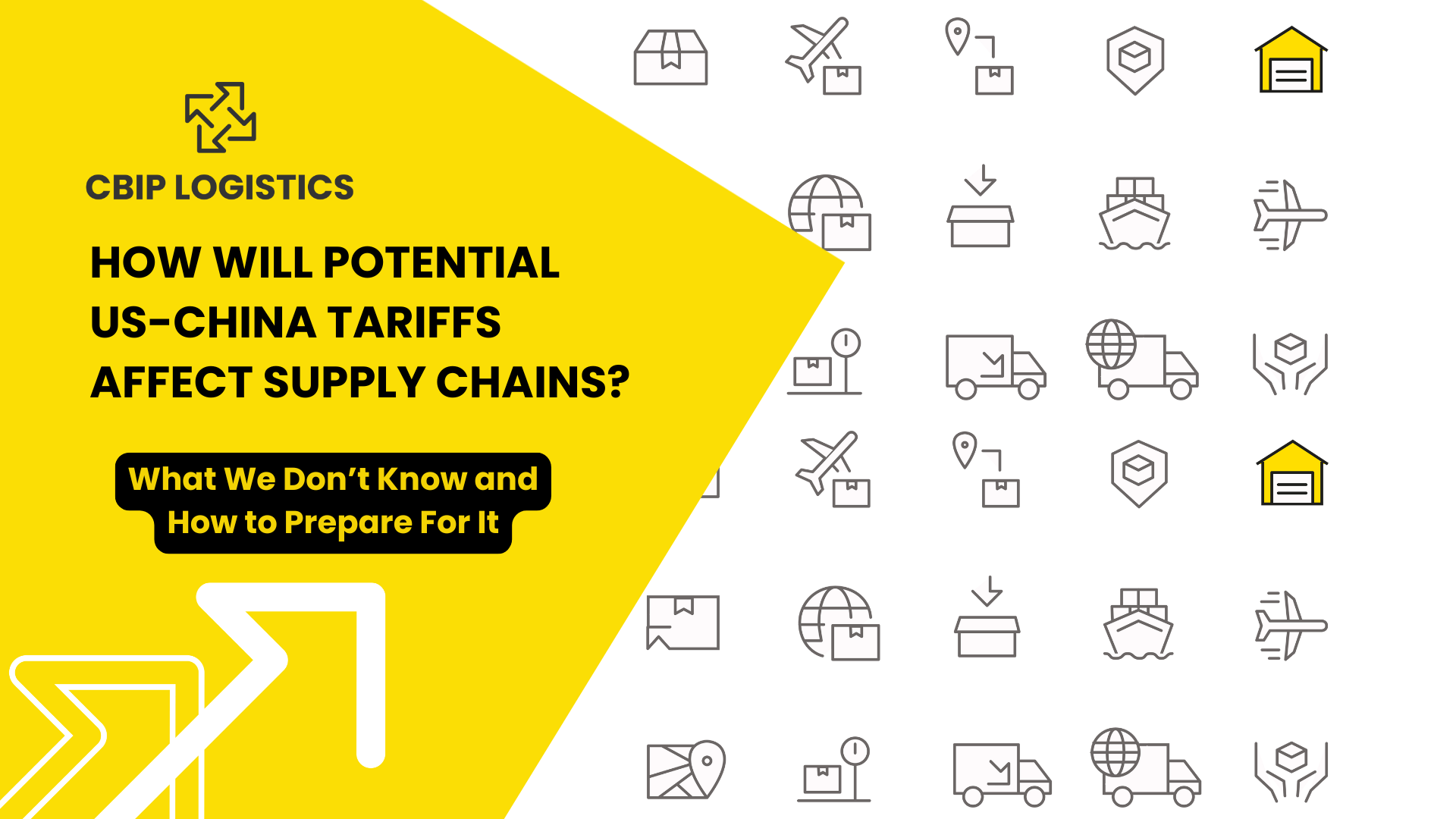How Will Potential US-China Tariffs Affect Global Supply Chains?

As the largest importer of goods globally, changes in US foreign trade policy have quite a bit of influence over global trade and supply chains.
China is the top supplier by far, but that may change if the incoming US president has anything to say about it.
Incoming president Donald Trump is famous for his love of the word “tariff”, but noone is exactly sure just how serious he is about his proposed taxes on imports. He has threatened 60% tariffs on imports from China, and up to 20% tariffs for imports from the rest of the world.
Most people think that this is a bargaining tactic to gain more favorable trade terms for the US, not what he really expects tariffs to be. Either way, the new US administration will rock US trade policy in a real way in 2025, and supply chains need to be ready for it.
Let’s take a look at the likely outcomes of a Trump trade war, who will be affected, and how should we be battening down our logistics to prepare.
Read about CBIP's Adaptable 4PL Logistics Services
Market & supply chain effects of really high tariffs
Growth slows
Were Trump to push for a full-on trade war, trade GDP growth is going to be much lower.
USD 135 billion of goods will be at risk under those tariffs. That’s assuming that 25% tariffs on imports will be the worst of it. If we’re talking about the worst case at 60% and 10 % rest of the world, the effects would be extreme. As much as a third of global GDP growth could be lost.
Given a full trade war, we would initially see higher rates in the US due to higher inflation expectations, followed by a slowdown in the economy. EU growth would begin to suffer, and their economy would slow down.
Freight rates zigzag
Back in 2018, trump’s announcing tariff increases caused a number of shippers to push forward ocean imports. Once the tariffs are announced, the same thing will happen, creating a rush in shipping demand.
In 2025, we’re likely to see container rates climb quickly ahead of tariff implementation. Inventories will grow, and shipping traffic will increase.
After freight rates’ preliminary climb, they will likely fall quickly once tariffs are in place. Tariffs will slow trade, port congestion will die out, and freight demand will fall. Freight prices will get lower and lower, and shipping providers will likely struggle due to decreased capacity.
Manufacturing moves
Already, we are seeing various brands trying to restructure their supply chains to avoid future tariffs. For US companies, that means trying to re-shore manufacturing to places like Mexico and Vietnam.
The problem is that the manufacturing capabilities, logistics networks, and infrastructure of these places are totally different from those of China. Vietnam has been a manufacturing hub for some time now, but its capacity is about 10% of China’s, and its manufacturing sector is not quite as well developed.
Related: How Changes to De Minimus Laws Affect Global Supply Chains
Chinese brands disappear from the US market
Temu and Shein are famously reliant on favorable US-CHina trade tariff laws, using the De minimus loophole to sell cheap goods to Americans and still make a profit.
If a trade war begins, certain Chinese brands that millions of people in the US use every day may suddenly disappear. These effects will be felt by those who use said brands to buy everyday goods like apparel and toys at affordable prices.
It’s unlikely they will be able to find such cheap prices from US-manufactured brands, and those effects will be felt - particularly by those who are already struggling in an economy burdened with low growth rates and rising inflation.
The key to supply chain uncertainty? Figure out your contingency plan
At the moment, there is a lot of uncertainty about what will happen when it comes to US-China trade relations. While you can’t predict what will happen with markets and supply chains, you can work to create plans that account for likely scenarios and help protect your brand in tough times.
Plus, you can work with an experienced logistics partner, because that’s what we do best. As your 4PL, we set up and manage your logistics across your entire supply chain, but that’s not all.
We pride ourselves on helping our e-commerce partners in uncertain times, whether that be planning for future possibilities by relocating certain operations through our extensive network, or quickly fixing an issue after a supply chain breakdown happens.
If you don’t enjoy following the news and trying to guess how you should manage your logistics in times of uncertainty, we’re here to help. Get in touch today for a totally free logistics consultation on how we can make your supply chain ready for anything in the new year.






